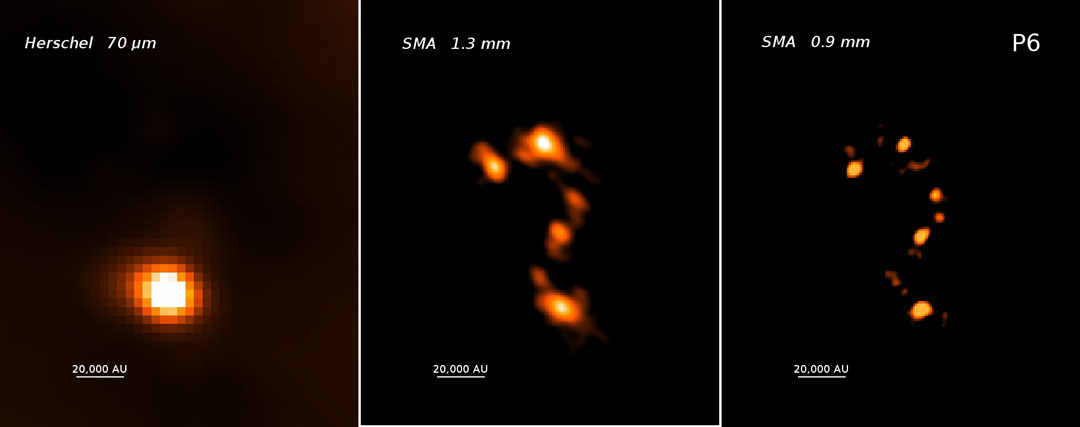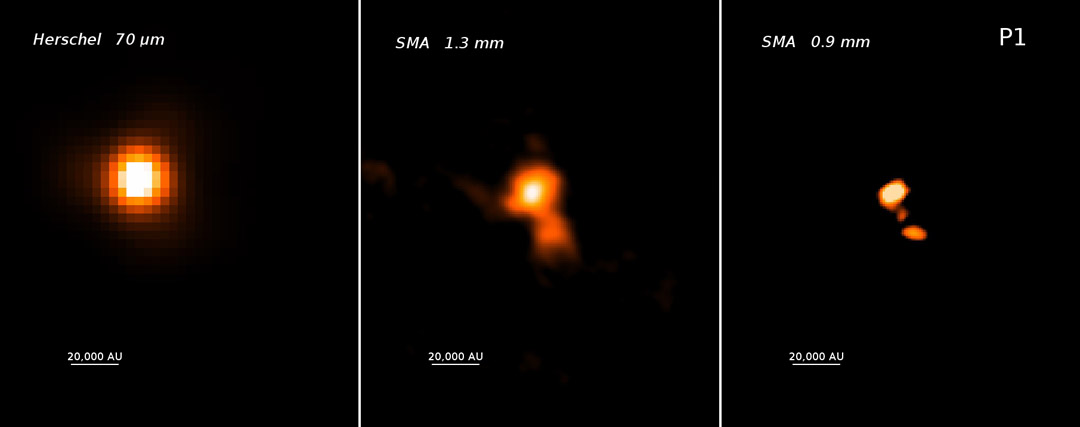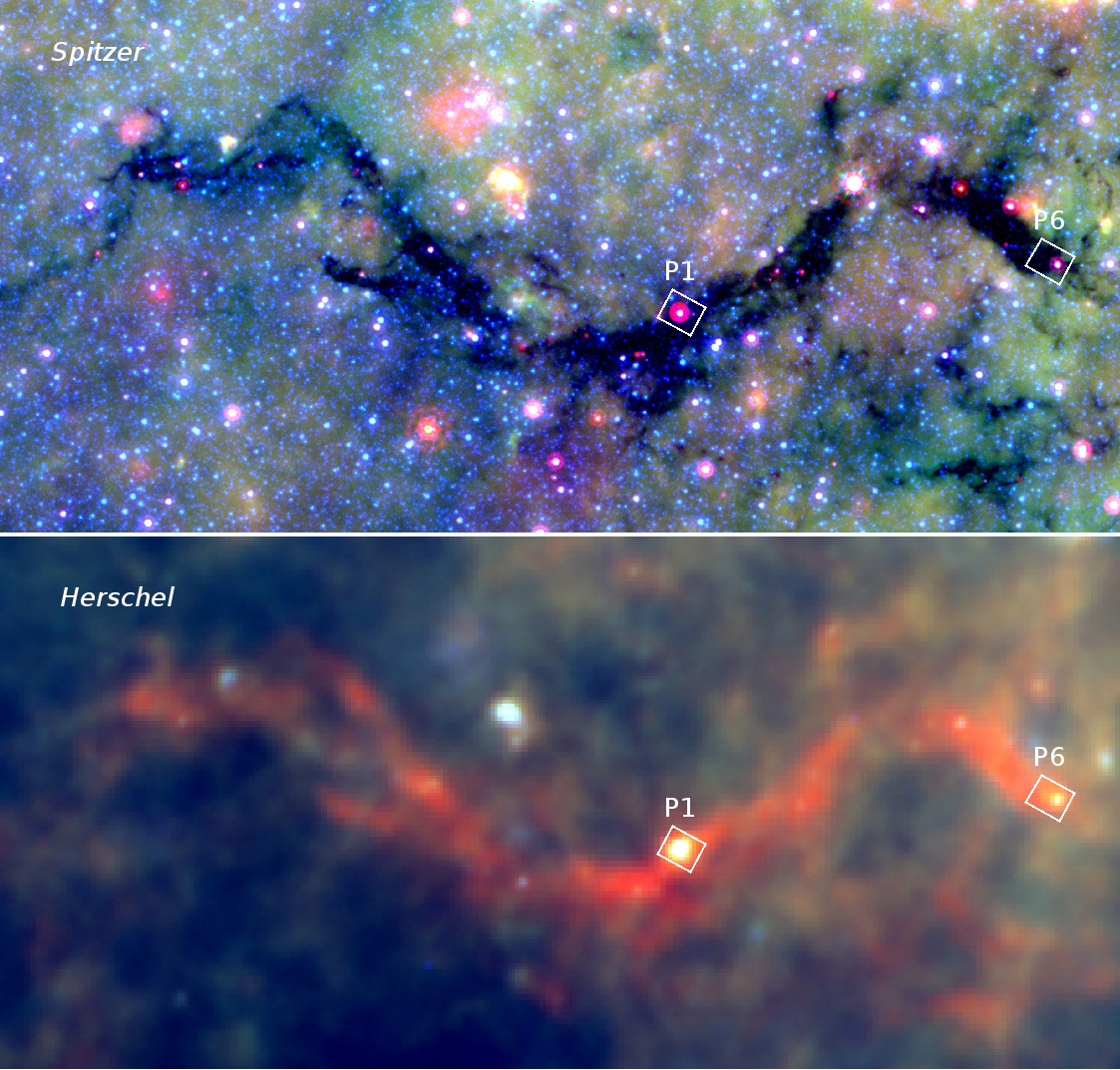Image List
-

These photos focus on the P6 star-forming region within the Snake nebula. The left panel shows a far-infrared view from the Herschel space telescope. Submillimeter views from the SMA are at center and right. The sensitive, high-resolution SMA images reveal small cosmic "seeds" scattered in the shape of a question mark. Each seed will form one or a few massive stars.
Herschel/EPoS, Sarah Ragan (MPIA); SMA, Ke Wang (ESO) -

These photos focus on the P1 star-forming region within the Snake nebula. The left panel shows a far-infrared view from the Herschel space telescope. Submillimeter views from the SMA are at center and right. The sensitive, high-resolution SMA images reveal small cosmic "seeds" spanning less than a tenth of a light-year, which will form one or a few massive stars.
Herschel/EPoS, Sarah Ragan (MPIA); SMA, Ke Wang (ESO) -

These two panels show the Snake nebula as photographed by the Spitzer and Herschel space telescopes. At mid-infrared wavelengths (the upper panel taken by Spitzer), the thick nebular material blocks light from more distant stars. At far-infrared wavelengths, however (the lower panel taken by Herschel), the nebula glows due to emission from cold dust. The two boxed regions, P1 and P6, were examined in more detail by the Submillimeter Array (SMA).
Spitzer/GLIMPSE/MIPS, Herschel/HiGal, Ke Wang (ESO)